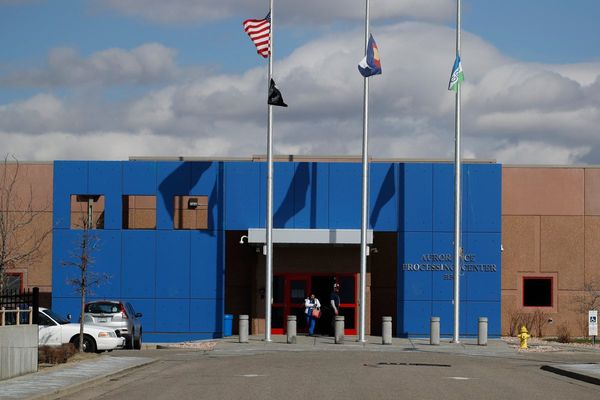
A portrait of 80s Auckland by Kelly Ana Morey (text) and Darryl Ward (photos)
I had just turned 17 when I arrived in Auckland at the beginning of 1986, unaccompanied by an adult for the first time. Finally freed from boarding school in New Plymouth. I was a provincial goth with the requisite spiky bleached blonde hair, heavy make-up, layers of black rags and all-important faux existential ennui. A look that amused the hell out of my mother, and evoked a response of irritated tolerance at school. I wasn’t alone. There were other goths and lots of spiky hair. At my school our rebellion was entirely sartorial. We all wanted to go to university. Marks were important.
My final year at school consisted largely of coasting along academically, smoking cigarettes, writing short stories about things I knew nothing about, listening to Japan and Aztec Camera - both bands I still love - and being in love with Adrian Kelly, because we were all in love with Adrian Kelly. Imagine a teenage Dylan Moran, with Bernard Black’s dysfunction, in a Joy Division T-shirt and you have Adrian Kelly. It was not by any means a bad time. But I couldn’t wait to catch a one-way bus out of that town and get on with the rest of my life. I was pretty convinced that I was destined for greatness.
Officially my move to Auckland was to attend university. Nothing fancy. Just a BA. It was the last of the golden times for the arts and universities. Stage I English papers had to have two sittings because there were so many students enrolled in them. And art history papers were still filling big lecture theatres. These days the art history department at the University of Auckland barely exists. I chose papers across a broad church including Italian Film - I have a passion for Fellini films to this day - and Russian Novel, as well as the usual 20th and 19th Century, and New Zealand Literature papers and a couple of art history ones. Russian Novel was never going to work out, those books are long. But the others would have been okay if only I had bothered to read the books, turn up for lectures and go to the odd tutorial. But I had better things to do. My first year wasn’t a complete washout. I passed two papers. It would take three years of being restricted to part-time study to make up for those five Did Not Sits.
Because I was from out of town I got a place in the old O’Rorke Hall, a collection of concrete buildings that as far as I can work out appear to have been purpose-built as a university residence in the late-1940s. After five years of sharing space with other bodies, I was over it, and subsequently became a huge pain in the arse for everyone. My crimes were many. I was a smoker who kept unsociable hours and dubious company. I think management was relieved when I volunteered to leave, they certainly didn’t bother to wave either my contract or any legalese at me in protest. I moved into Cintra Apartments on Whittaker Place, a little art deco gem that was the first of a succession of interesting living choices. It was a mere six-minute walk from the university, if I bothered to go.
By this stage I had started working at the coolest club in town, The Brat. My job was to wear wacky clothes and pick up glasses and put them through the steriliser. It wasn’t arduous and it was quite acceptable to go and have a dance if a favourite song came on. From memory it was pretty well-paid too. Certainly enough to cover rent - $70 per week. The spiky hair and layers of opshop black rags transitioned into Zambesi and vintage, and I was taken in hand by one of the hair girls, who took me along to a class as her model and cut the sprayed and backcombed monstrosity on my head into a sleek white-blonde Edie Sedgewick cap. Big hair was so 1985.
I only lasted at The Brat for about six months. I was offered a waitressing job at a bar and restaurant on the corner of Courthouse Lane and Chancery Street: the Melba.
*

Auckland had always had its well-to-do business community, the burghers whose monikers are so synonymous with the city that their names appear on buildings, street signs, parks, squares and so on. They quietly expanded their business horizons, built their mansions on the seaward slopes of St Heliers and Remuera and mostly tried to set a good example to the hoi polloi. They also mainly dined at home because they had staff. Eating in public, other than at one’s club, was something working people did predominately in pub dining rooms of varying quality and a limited number of tearooms, cafes and restaurants, all of which closed early and very few of which were licensed.
By the 1950s and 60s dinner dance and cabaret venues, Chinese restaurants and steak houses had been added to the mix. The first of the Tony’s restaurants opened in 1963 on Wellesley Street. It started out serving pasta but diversified into steaks. They would soon be joined by restaurants with a distinctly European vibe, like the Hi Diddle Griddle, El Matador, Gourmet and La Boheme. Although eating out was still regarded as a special occasion type event, the number of family-style dining options, like Cobb and Co and the Hungry Horse, were coaxing a whole new type of diner out of their own kitchens if not their comfort zones.
The late 1970s and early 1980s would see an explosion of eateries across Auckland’s innercity and neighbouring suburbs. Foreign and vegetarian food had arrived. As had casual dining as a commonplace activity. Tofu burgers, charwamas and nachos were the mainstay of university students, club kids and middle-aged hippies. But the brash city boys, who played the markets and bought and sold prime real estate with their money that was so new it sparkled in the sun, had an insatiable appetite for nouvelle cuisine. It was all about French food and champagne. Restaurants like Orleans on Symonds Street with its glass conservatory overlooking what is now a tangle of motorway in Grafton Gully. The developers took Orleans out in an afternoon with a wrecking ball soon after I arrived in Auckland. I think it was a Sunday. Pulling buildings down on Sundays was very popular in the 80s in Auckland.
The French Cafe further up Symonds Street was still fairly new and looked nothing like it does today, nearly 40 years and a number of owners later. I went there for my 18th birthday. The decor was very chintzy and a bit frilly, its first iteration really embraced the French cafe look. My entree was a scallop mille feuille, essentially a scallop pie. The French theme continued in the innercity with Clichy and Le Brie. Up in Parnell was Antoine’s, which was very French and very capital F-Fancy and fed the city boys with their company credit cards.
By the mid 80s Antoine’s had been joined by a whole lot of new kids on Parnell Rise, like the Verandah Bar and Grill, Metropole and Iguazu. Ponsonby was on the way to becoming dining-out central with the establishment of places like Prego and SPQR. In the innercity, and the four short blocks of back streets radiating out from Freyberg Square was Delmonico’s; Le Brie on O’Connell Street with its front of house manned with terrific elan by the legendary François; and the Melba.
*

The Melba inhabited the ground floor of a fan-shaped art deco building that radiated out from the corner of Courthouse Lane and Chancery Street. It frequently featured in the Felicity Ferret pages of Metro. It was the kind of place you could ride a horse into and the bartender would ask the horse what it wanted to drink. This really did happen. I know. How very Studio 54.
The Melba was opened in 1980 by Michael and Helen Haslett and Tony Richards and was immediately an institution. One of Auckland’s most glamorous watering holes, with its large arched half-circle windows, two gigantic greyhounds statues and huge potted palms. The walls were decorated with Gretchen Albrecht half-circle paintings, a couple of Gavin Chilcotts and two Roy Lichtenstein knock-offs. A grand piano sat in one corner across from the bar and a small lounge area with the most comfortable couches in the world. Many a staff member on a double shift napped on those couches. By the time I turned up in 1986, Tony had sold out his stake. Michael and Helen still ran the restaurant together on a day-to-day basis even though they had amicably uncoupled with Michael coming out and Helen falling for their lovely maitre’d and new co-owner André Moffat. It was all very civilised.
The menu changed seasonally but there were some things on it that were Melba immutables. Potato skins with sour cream, so simple, but there would have been strong words had they been taken off the menu, and the famous Fettuccine Fellini. A simple spinach fettuccine with cream, a tablespoon of very finely diced onion and garlic and a lot of very salty parmesan and ham. Sounds simple enough, but it was addictive and I’ve never been able to accurately replicate it. I think it had something to do with the powdered parmesan that they used, because real parmesan in New Zealand was still not much more than a rumour.
We had live music on Fridays and Saturdays, Grant Chilcott and his swing band Wentworth Brewster virtually had a residency, but I remember Beaver and Greg Johnson with their respective bands also playing.
I had no waitressing experience but I think that was an advantage. It meant Michael and André could train me right. I started out doing Friday and Saturday nights because although they were busy, those were the two nights when it was a little less formal in terms of service style. The shifts you really wanted though were week-day lunches, particularly on Fridays. Those lunches, all on the corporate credit cards of the city’s financial high flyers, were where the really big tips were made. Because everyone on a long lunch tipped back then. And they tipped well. We regularly made more in tips than we did in wages and we weren’t badly paid by any means. I remember after one memorable lunch, walking across what is now Freyberg Square and into Dadley’s, a shoeshop full of expensive imports, and blowing the day’s tips on my first pair of Robert Clergerie shoes. It was a time when waitresses habitually wore Zambesi frockage and drank Bollinger at least three times a week. And I genuinely thought that was what my life was going to be like.
However, developers, and one in particular, the infamous Mark Lyon who died in July, were hungry for the site cradled between Courthouse Lane and Chancery Street that the Melba and a number of other businesses inhabited. Lyon had big plans for the site and in the end, I have been told, his offer was too good, and Helen and Michael sold their lease to him in 1987. It would be all over for the restaurant by the end of the year.
The final countdown at the Melba had started by the time the global stock markets crashed on Black Monday, October 19. Over the next few days, before it all sunk in, the finance guys descended on us and spent money like there was no shiny tomorrow because there wasn’t. I often wonder if the Melba would have weathered the repercussions of the crash if its end hadn’t already been signed and sealed. I think the days of long lunches and spectacular tips on the company credit card might have died on Black Monday.
In the final days of the Melba the boys hung a homemade banner over the door and each morning the number of days we had to go was changed. Darryl Ward who was starting out as a photographer in the mid 80s and was, among other things, shooting for Ngila Dickson’s wonderful magazine Cha Cha, began taking daily photos of the banner with various arrangements of staff and owners beneath it. He also photographed the astonishing final party, creating an extraordinary visual record of a singular place and time which he then archived. "I took those Melba countdown pics," Ward explains, "because some of the the staff were my friends ... or maybe they were going to be and I was drawn to the improvised sign and the need to record the destruction of yet another mildly interesting building that probably didn’t need to go".

Far too many people who worked and partied at the Melba are no longer with us. Michael, Poi Niuloa, Ken Chambers, Charlotte Dawson are now sadly gone, but here they are, along with many of the extended Melba family, captured on film, on a handful of days in the early summer of 1987.
The Melba’s doors opened for the final time on December 12, 1987, with a spectacular party. Everybody dressed up. Gallons of Moët was drunk and a million cigarettes were smoked. Because that’s the kind of place it was.
We all moved on. The kitchen, the bar guys, Poi and Shane, and André set up Rosini’s just around the corner on High Street, with Ken Chambers. Michael buggered off to Thailand where he lived for a number of years before returning to set up Joy Bong, a small Thai restaurant in the Grey Lynn shops. And bloody François from Le Brie tricked me into going to the soon-to-be-opened Harbourside. Which would prove to be a bit of a mistake. The Melba may have been fancy in many ways, but it celebrated the individuality and various personalities of its staff and our clientele were family. I used to quite often wear my plastic Minnie Mouse ears to work and there’s a photo of me in Cha Cha to prove it.
Harbourside was huge with a cast of thousands, and it was all about the numbers and slick impersonal service. Its bread and butter was bus loads of Asian tour groups who were served a prepaid three-course authentic New Zealand seafood meal. Prepaid meant no tip. You knew they hated you when you regularly ended up with your section filled with tour groups. Eventually I got fired for having a bad attitude. My final crime was throwing an apple core off the balcony into the sea at the conclusion of a preshift meeting. From memory I was fired on the spot. And all I felt was relief. So I left Auckland and headed north. I would return to Auckland, and leave again fairly regularly in the years between then and now. And there would be other restaurants, even some I really liked, but it was never the same. The Melba ruined me for every other place I’ve carried plates.
The lovely art deco building the Melba called home and the rest of the block was demolished. Unfortunately the development ran into problems after rather than before the wrecking ball. Because of this the site was for many years a car park. The block has since been developed as Chancery Square, a shopping destination, complete with faux-historic architecture which has none of the charm of the original buildings that once so comfortably inhabited this once glorious little spot of innercity Auckland.

Kelly Ana's story was commissioned by Talia Marshall, guest editor of ReadingRoom this week. She is our second guest editor this year, after Rijula Das; two more guest editors will be appointed in 2023. Anyone wishing to be considered for the week-long, fee-paying role can suggest themselves to ReadingRoom literary editor Steve Braunias on stephen11@xtra.co.nz







